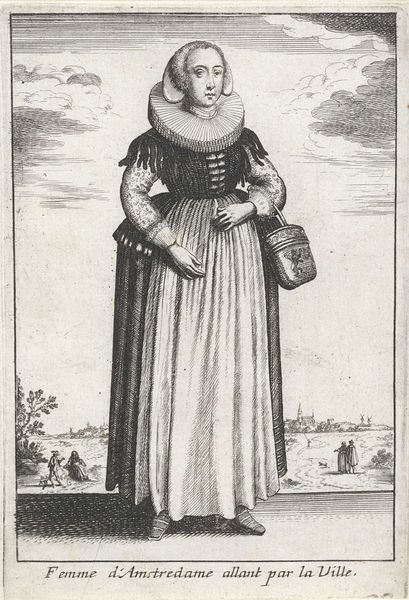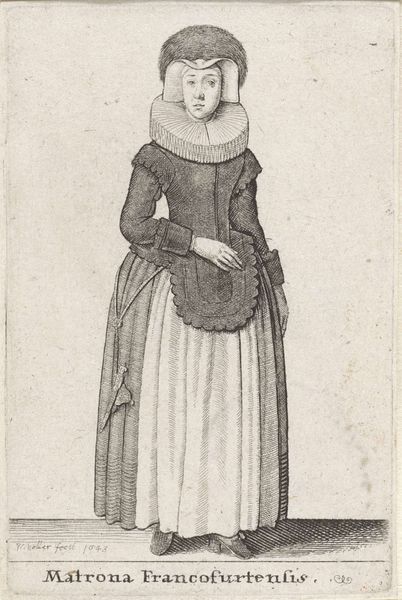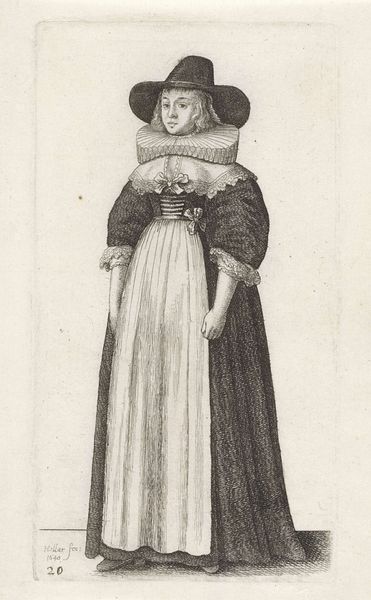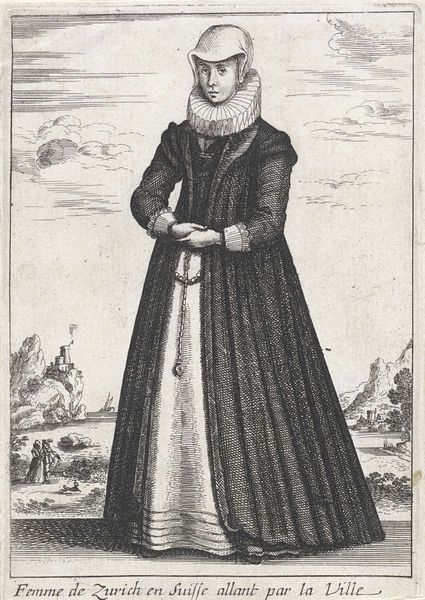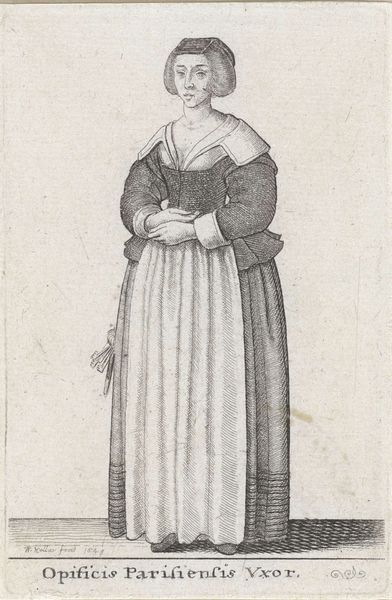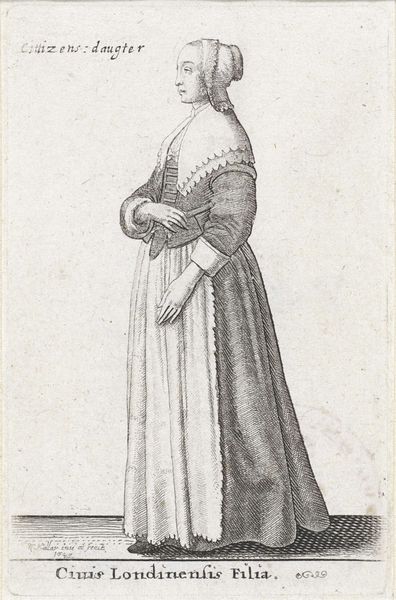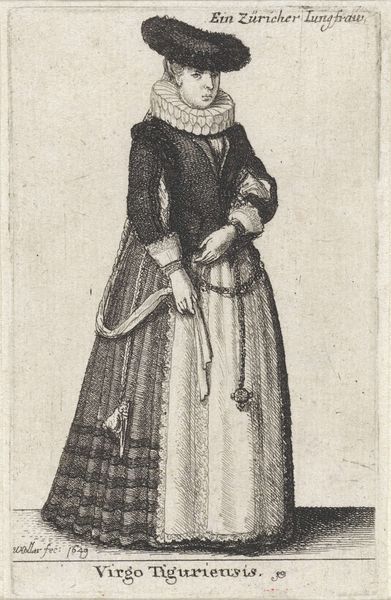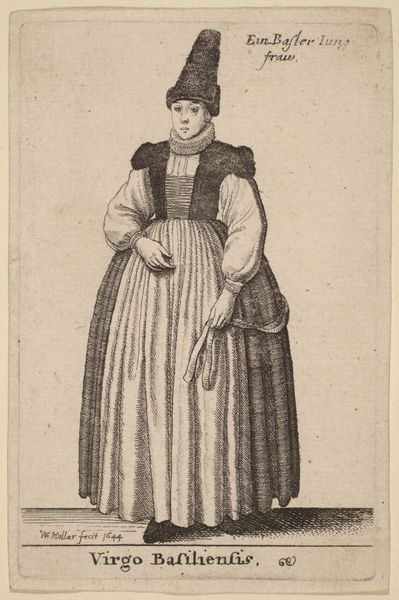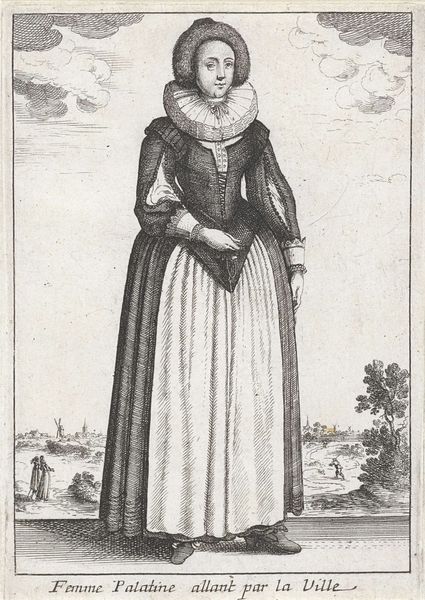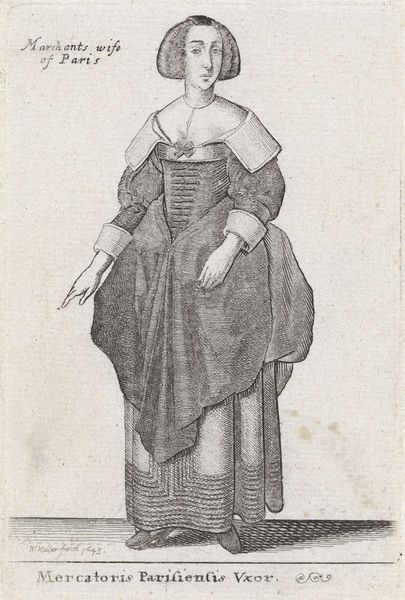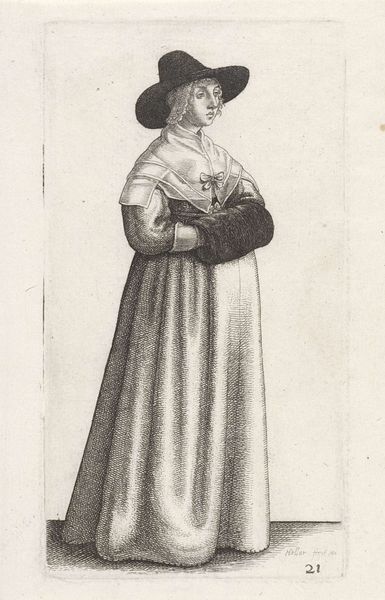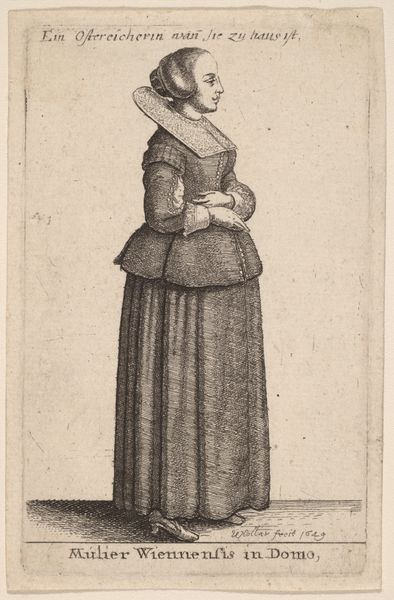
print, engraving
#
portrait
#
dutch-golden-age
# print
#
old engraving style
#
figuration
#
genre-painting
#
dress
#
engraving
Dimensions: height 93 mm, width 60 mm
Copyright: Rijks Museum: Open Domain
Wenceslaus Hollar made this print in 1644, using the etching process. He would have coated a copper plate with wax, drawn into it with a sharp needle, and then bathed the plate in acid. The longer the acid bit into the metal, the darker the line that would appear in the final print. Look closely, and you can see how Hollar used this process to describe the textures of the woman’s clothing. Her ruff, sleeves, and purse are all carefully delineated, suggesting fabrics of considerable value. The very act of making a print like this underscores the economic activity of the time, with merchants growing wealthy and fashion becoming ever more elaborate. Hollar himself was deeply embedded in this world, creating images that served both as records and advertisements of contemporary styles. His skillful manipulation of line transformed base metals into documents of social standing, revealing the intricate relationship between material culture and the burgeoning mercantile class.
Comments
No comments
Be the first to comment and join the conversation on the ultimate creative platform.
